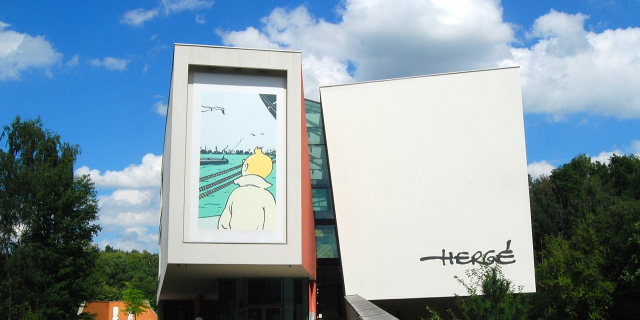The Hôtel Tassel (French: Hôtel Tassel; Dutch: Hotel Tassel) is a historic town house in Brussels, Belgium. It was designed by Victor Horta for the scientist and professor Emile Tassel, and built between 1892 and 1893, in Art Nouveau style. It is considered one of the first buildings in that style (along with the Hankar House by Paul Hankar, built at the same time) because of its highly innovative plan and its ground-breaking use of materials and decoration. It is located at 6, rue Paul-Emile Janson/Paul-Emile Jansonstraat, a few steps from the Avenue Louise/Louizalaan.
Together with three other town houses of Victor Horta, including Horta's own house and workshop, it was added to the UNESCO World Heritage list in 2000 as the core of epoch-making urban residences that Horta desi...Read more
The Hôtel Tassel (French: Hôtel Tassel; Dutch: Hotel Tassel) is a historic town house in Brussels, Belgium. It was designed by Victor Horta for the scientist and professor Emile Tassel, and built between 1892 and 1893, in Art Nouveau style. It is considered one of the first buildings in that style (along with the Hankar House by Paul Hankar, built at the same time) because of its highly innovative plan and its ground-breaking use of materials and decoration. It is located at 6, rue Paul-Emile Janson/Paul-Emile Jansonstraat, a few steps from the Avenue Louise/Louizalaan.
Together with three other town houses of Victor Horta, including Horta's own house and workshop, it was added to the UNESCO World Heritage list in 2000 as the core of epoch-making urban residences that Horta designed before 1900.
The first town house built by Victor Horta was the Autrique House. This dwelling was already innovative for its application of a novel Art Nouveau decorative scheme that did not include references to other historical styles. However, the floor plan and spatial composition of the Autrique House remained rather traditional. On the deep and narrow building plot, the rooms were organised according to a traditional scheme used in most Belgian town houses at the time. It had a suite of rooms on the left side of the building plot, flanked by a rather narrow entrance hall with stairs and a corridor that led to a small garden at the back. Of the three-room suite, only the first and the last had windows, so the middle room, used mostly as a dining room, was rather gloomy.
 The Hôtel Tassel in the early 20th century
The Hôtel Tassel in the early 20th centuryAt the Hôtel Tassel, Horta definitively broke with this traditional scheme; in fact, he built a house consisting of three different parts. Two rather conventional buildings in brick and natural stone—one on the side of the street and one on the side of the garden—were linked by a steel structure covered with glass. It functions as the connective part in the spatial composition of the house and contains staircases and landings that connect the different rooms and floors. Through the glass roof, it functions as a light shaft that brings natural light into the centre of the building. In this part of the house, that could also be used for receiving guests, Horta made the maximum of his skills as an interior designer. He designed every single detail: door handles, woodwork, panels and windows in stained glass, mosaic flooring and furnishings. He succeeded in integrating the lavish decoration without masking the general architectural structures.
The innovations made in the Hôtel Tassel would mark the style and approach for most of Horta's later town houses, including the Hôtel van Eetvelde, the Hôtel Solvay and the architect's own house and workshop. These houses were expensive to construct and only affordable by the haute-bourgeoisie. For this reason the pure architectural innovations were not largely followed by other architects. Most other Art Nouveau dwellings in Belgium and other European countries were inspired by Horta's whiplash decorative style, which is mostly applied to a more traditional building. The Hôtel Tassel had a decisive influence on the French Art Nouveau architect Hector Guimard, who later developed a personal interpretation of Horta's example.
As of 2017, the Hôtel Tassel was a private office.[1]

































Add new comment